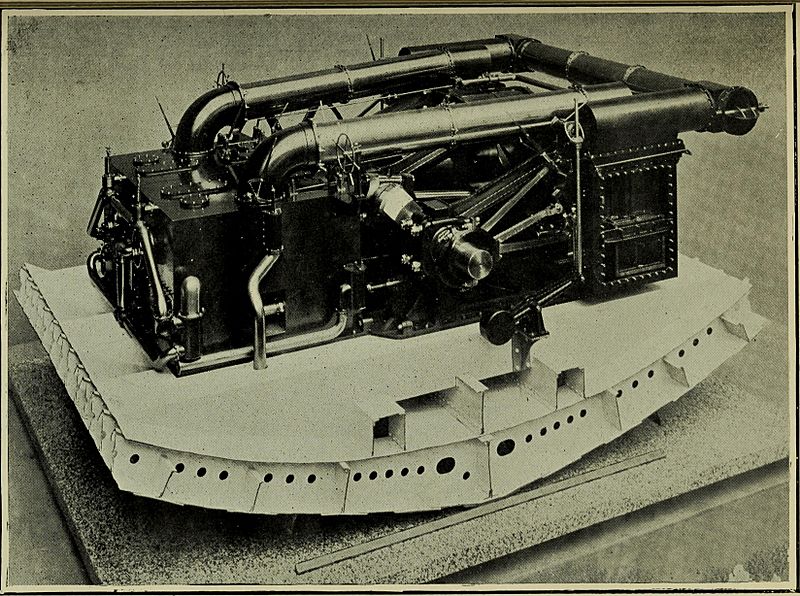Image: The romance of the ship; the story of her origin and evolution (1911) (14778724962)

Description: Identifier: romanceofshipsto00chat (find matches) Title: The romance of the ship; the story of her origin and evolution Year: 1911 (1910s) Authors: Chatterton, E. Keble (Edward Keble), 1878-1944 Subjects: Ships Shipbuilding Publisher: Philadelphia, J.B. Lippincott company London, Seeley and co., limited Contributing Library: Boston College Libraries Digitizing Sponsor: Boston Library Consortium Member Libraries View Book Page: Book Viewer About This Book: Catalog Entry View All Images: All Images From Book Click here to view book online to see this illustration in context in a browseable online version of this book. Text Appearing Before Image: ched at Birkenhead. This was a paddle craft. Two years after this an iron steamer was built at Blackwall for a private individual, and was afterwards purchased by the Admiralty as the first screw-propelled vessel in our navy. Constructed of iron, she showed on her trial trip in 1843 that her speed was over 12 miles an hour, and on being taken over she became known as H.M.S. Dwarf, though she had been launched as the Mermaid. She was of 164 tons, and her mean draught on her trial trip was only 5 1/2 feet, which is in wonderful contrast to the modern Dreadnought, which draws as much as 26 feet. In 1846 the unfortunate Birkenhead was launched as a steam frigate for the royal navy. Built of iron,she was eventually used as a transport, and hada tonnage of 1400. This vessel was also a paddle-wheel craft, and foundered off Simons Bay, South Africa, six years after her launching, and 454 people perished. The year before this historic disaster occurred two paddle-wheel gunboats had been built and engined by... page 128 Text Appearing After Image: Model of the engines of HMS Northumberland. THE FIRST STEAM WARSHIPS a British firm for the Prussian Government, but during the Crimean War they were obtained by the English Government in exchange for a 36-gun frigate, and saw active service under the names Recruit and Weser. Some details as to these two ships of war will afFord the reader an idea as to how far steam vessels had advanced about the time when the clippers were beginning to win fame and fortune. Both these paddle-wheelers were double-ended, and could carry enough coal for steam-ing 2000 miles, whilst drawing when thus loaded only 7 feet of water. They were fitted with oscillating engines, making 33 revolutions a minute, which gave them a speed of over 11 knots per hour. Steam was supplied from four tubular boilers, and the paddle-wheels were 17 feet in diameter. Fitted with two masts anda sail area of 415 square yards, their gross registered tonnage was 334 tons each, length on the load water-line 178 feet, and extreme beam 26 feet. As early as 1834 Francis Pettitt Smith (afterwards knighted Note About Images Please note that these images are extracted from scanned page images that may have been digitally enhanced for readability - coloration and appearance of these illustrations may not perfectly resemble the original work.
Title: The romance of the ship; the story of her origin and evolution (1911) (14778724962)
Credit: https://www.flickr.com/photos/internetarchivebookimages/14778724962/ Source book page: https://archive.org/stream/romanceofshipsto00chat/romanceofshipsto00chat#page/n164/mode/1up
Author: Chatterton, E. Keble (Edward Keble), 1878-1944
Permission: At the time of upload, the image license was automatically confirmed using the Flickr API. For more information see Flickr API detail.
Usage Terms: Public domain
License: Public domain
Attribution Required?: No
Image usage
The following page links to this image:

